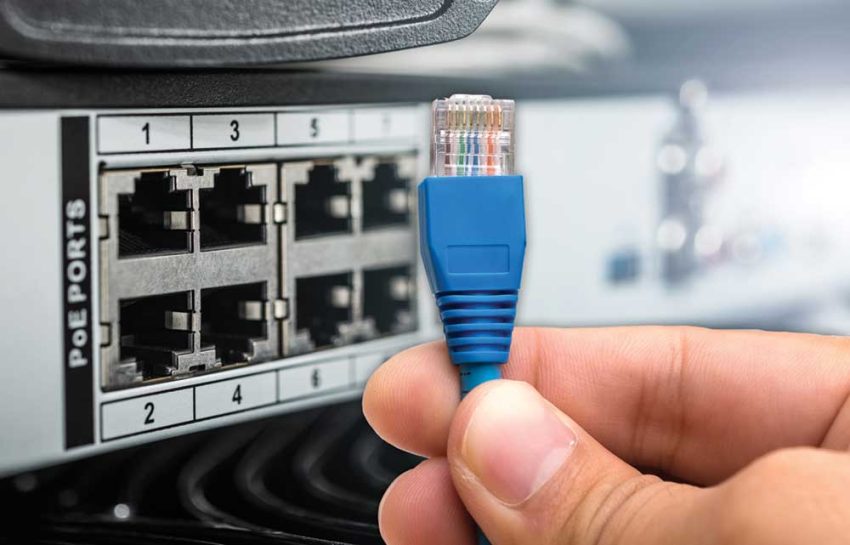With the increased use of advanced technology in the industrial sector, there has been a surge of tools to test modern machinery and equipment. Among these, two commonly used products are network testers and inspection cameras.
A network tester helps test and evaluate the performance, safety, and stability of a computer network. With the increased significance of digital communication, as well as the rising intricacy of network infrastructure, the importance of network testers has increased to ensure the stable performance of several sectors, such as IT, finance, telecommunications, and healthcare.
Inspection cameras have also become a necessary tool for multiple sectors like HVAC, plumbing, construction, and automotive. These cameras are used for inspecting and diagnosing any areas that can’t be reached easily, like engines, walls, and pipes. The market of inspection cameras in the USA has experienced significant growth during the past few years owing to the rising demand for advanced inspection tools and an increase in construction projects across the country.
Top Network Testers in the USA
Network testers are essential devices for professionals who maintain, troubleshoot, and optimize computer networks. There are different types of network Tester in the USA market, each designed to serve particular purposes and requirements.
Some popular network testers in the USA include the Fluke Networks DSX-8000 CableAnalyzer, the Viavi Solutions Observer Platform, the Netscout AirCheck G2, the Wireshark network analyzer, and the Spirent TestCenter. These products provide a wide range of features and abilities, from cable testing and network monitoring to wireless testing and protocol analysis.
- Cable testers
Cable testers are one of the most commonly used network tester products in the USA. These are used for diagnosing and identifying issues in network cabling, like crossed wires, broken wires, and misconfigurations. These are also able to verify cable continuity, locate the point of faults in the network, and even measure cable length. These testers come in different types, such as cable analyzers, handheld testers, and certification testers.
- Network analyzers
Another type of network tester product that is widely used in the USA is a network analyzer. Network analyzers are used for capturing and analyzing network traffic, which helps in identifying bottlenecks, monitoring network performance, and troubleshooting any other network issues. These also offer real-time statistics and metrics on network traffic, like packet loss, bandwidth usage, and latency. These are available in various forms, such as software-based analyzers and hardware-based analyzers.
- Wireless network testers
Wireless network testers are another network tester that is gaining popularity in the industry for the past few years. These tools help professionals in evaluating and diagnosing any issues in the wireless network. They can evaluate signal strength, assess data transfer rates, and find the possible sources of interference for the overall optimization of wireless connections.
- Protocol analyzers
Protocol analyzers are a popular type of network tester in the USA. These are used for analyzing and decoding network protocols, which help in identifying possible issues with network traffic. These products can also capture and monitor network packets, allowing users to evaluate network performance, and troubleshoot issues in a quick, efficient manner.
- Packet generators
Packet generators are used for generating simulated network traffic to test the performance of a network and find possible issues, like congestion and bottlenecks. These products can simulate various kinds of traffic, such as video, VoIP, and data while providing insights into network capacity and bandwidth utilization.
Top Inspection Camera in the USA
Inspection cameras, often known as borescopes or endoscopes, are useful equipment used in a variety of industries around the United States to examine and diagnose difficult-to-reach places. The market of inspection cameras in the USA offers a diverse variety of products, each with unique characteristics and specifications to meet the needs of various sectors and purposes.
Ridgid SeeSnake Inspection Cameras, Fluke DS703 FC Video Inspection Scope, Milwaukee M12 Cordless Inspection Camera, General Tools PalmScope Video Inspection System, DEWALT DCT410S1 Inspection Camera, Klein Tools Borescope Inspection Camera, and iBEAM Inspection Camera with Wireless Display are some of the most popular Inspection Cameras in the USA. Each is known for its specifications that cater to a unique need and area of work.
- Rigid borescope
The rigid borescope is a popular type of inspection camera. The sturdy tube of these cameras enables easy handling and stability during examinations. They are available in a variety of lengths and diameters, while the images acquired by them can be seen on a screen or saved for future use. Rigid borescopes are widely utilized in aviation, automotive, and industrial settings.
- Flexible borescope
The flexible borescope is another kind of inspection camera that includes a flexible tube that is bendable and twistable. This allows them to fit into small and curved places easily. These products can be found in various shapes and sizes, and display the pictures on a screen that can be saved as well. Flexible borescopes are widely utilized in the plumbing, HVAC, and automotive industries.
- Video borescope
Video borescope is another type of inspection camera in the USA that captures video footage of various areas, helping in a more thorough inspection. These are available in a variety of sizes and specifications, and the captured videos have displayed on a screen or recorded for future use. Video borescopes are widely utilized in the construction, power generating, and maintenance industries.
- Wireless borescope
These cameras wirelessly transfer photos to any device, like a smartphone or tablet, which allows for remote viewing and quick image sharing. They are available in a variety of sizes and specs, and some models include built-in Wi-Fi for convenient networking. Wireless borescopes are extensively used in house inspections, plumbing, and vehicle repairs.
- USB borescope
These cameras use USB to connect to a computer or mobile device, making capturing and sharing images quite easy and fast. These are available in a variety of sizes and features, with some variants including built-in LEDs for better visibility. USB borescopes are widely used in the electronics, precision manufacturing, and medical sectors.
Final Words:
Network tester devices are critical tools for network professionals, allowing them to assure computer network stability, performance, and security. The function of network testers has grown more crucial than ever. With the rising complexity of network infrastructure and the growing need for digital communication, the market for network tester products is likely to rise further in the coming years.
The market of inspection cameras in the USA offers a diverse range of products, each with unique features and specifications to meet the needs of various industries and applications. Rigid, flexible, video, wireless, and USB borescopes are all popular varieties of inspection cameras, each with its own set of benefits and applications.
Frequently Asked Questions:
What are the typical features of a network tester in the USA?
Network testers are available with several characteristics, based on the kind and function of the network tester. Cable testing, Wi-Fi testing, network traffic analysis, packet production, and protocol decoding are all common features of these products.
What industries commonly use an inspection camera in the USA?
The market of inspection camera in the USA caters to a variety of sectors, such as HVAC, plumbing, construction, automotive, aerospace, power production, and medical. They are used for checking and diagnosing difficult-to-reach regions such as pipelines, engines, walls, and machinery to make sure they are in good operating order.
What are some key features to consider when choosing an inspection camera?
The diameter and length of the tip, the camera resolution, the kind of illumination (LED or fiber-optic), the display size and type, the viewing angle, and the recording and sharing capabilities are all important factors to consider when purchasing an inspection camera.




